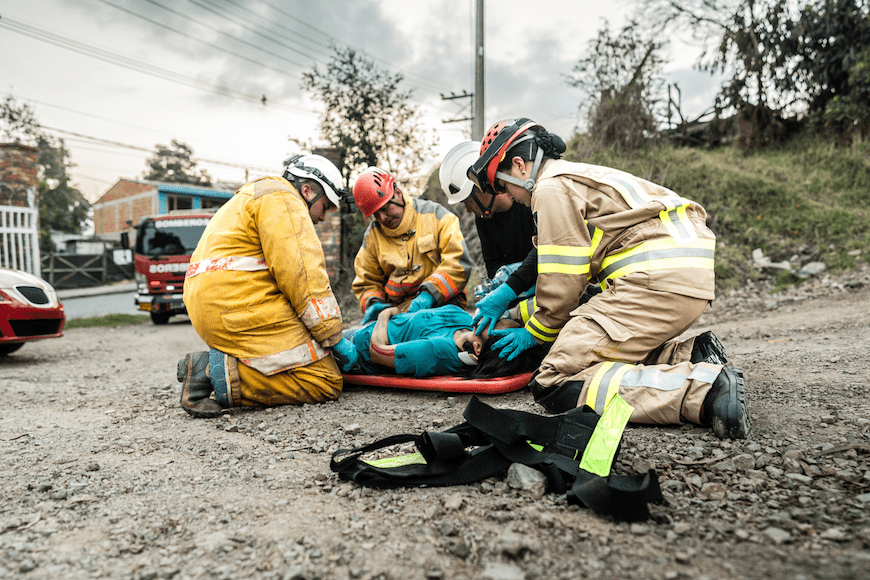One day after pulling out of a tournament in Texas, PGA Tour player Grayson Murray committed suicide. Now, multiple outlets – led by the UK’s Daily Mail – report that the young golfer died from carbon monoxide poisoning.
“The two-time PGA tour winner, 30, is believed to have left his Land Rover running in his ground-floor garage then headed upstairs as it pumped fumes into the three-story property in Palm Beach Gardens,” the British tabloid reported on May 28.
The player had been open about his battle with alcoholism and depression and had recently celebrated eight months of sobriety.
The tragic story once again highlights the persistent suicide crisis and how – despite our best efforts – it plagues countries worldwide. What better time, then, to cover recent research that informs our community’s efforts to fight back
Extreme PMDs Amplify Suicide Risk
A motley crew of Swedish, Icelandic, and U.S. epidemiologists and environmental medical specialists published research this week that shows that Swedish women struggling with premenstrual disorders (PMDs) are twice as likely to die by suicide.
Appearing in JAMA Network Open, the paper analyzed several Swedish population databases, pulling info on women with PMDs.
The researchers, following up on earlier reports that suggest PMD sufferers are accident-prone, wanted to investigate whether it also influenced suicide risk.
“Our study revealed a consistently elevated risk of suicide among women with PMDs across all age groups,” the study’s authors wrote. “This is in line with previous research showing that individuals with PMDs have a higher prevalence of suicidality. Our recent study showed that women with PMDs were at increased risk of suicide attempts. However, to our knowledge, the current study is the first report to illustrate the increased risk of completed suicide.”
Sleepless Nights Drive Suicide Risk
Another research project – out of the University of Arizona College of Medicine-Tucson – revealed that suicide (and homicide) risks peak at night. The researchers suggest that factors such as nocturnal wakefulness, age, alcohol use, and relationship conflict all play a part.
Nearly 19 percent of suicides and 36 percent of homicides occur at night.
Poring over 15 years of U.S. data, the university researchers found a fivefold greater risk for suicide and an eightfold greater risk for homicide between 2 a.m. and 3 a.m., when adjusted for the number of people who were awake.
The study, which appears in our own Journal of Clinical Psychiatry, highlights that disrupted sleep impairs rational thought, and drives impulsive behaviors in vulnerable individuals.
The “mind after midnight” hypothesis suggests that nocturnal wakefulness erodes decision-making and rational thinking. It also elevates risk during periods of negative mood and distorted risk/reward processing.
Adolescents, young adults, intoxicated individuals, and those with partner conflicts face higher nighttime risks. Notably, cannabis use and depression made no impact.
The research also revealed that:
- Individuals aged 15-24 had a threefold greater nighttime risk for suicide.
- Older adults faced unexpected risks at 6 a.m
- Homicide risks were consistent across ages but predominantly affected young adults.
The researchers added that future investigations could dig into the brain mechanisms behind these risks and the potential for sleep improvement strategies to mitigate them.
Jail Time Threatens Mental Health
Finally, another JAMA Network Open paper reports that roughly a fifth of the suicides in the United States were committed by people who’d been incarcerated for at least one night the previous year.
“The 7.1 million Americans released from jail during the year have an average suicide risk that is nine times the risk of other American adults,” Jennifer Johnson, founding chair of the Charles Stewart Mott Department of Public Health at Michigan State University and a co-author of the study, said. “Twenty percent of suicides occurred among those who were released from jail in the past year and another 7 percent were by those in their second year post-release.”
The research team argued that targeted, responsive screening and intervention efforts could stem the tide of post-release suicides.
“People do not realize that many people detained in jail are released back to the community within days,” Ted R. Miller, principal research scientist at the Pacific Institute for Research and Evaluation in Maryland and the study’s lead author, explained. “They are walking around in the community with us and too often are at high risk for suicide.”
Further Reading
Mental Health Issues Threaten Maternal Mortality Numbers
New Study Reinforces PCOS-Suicide Connection
VA Fights Its Own History With Early Success of Suicide Prevention Program




